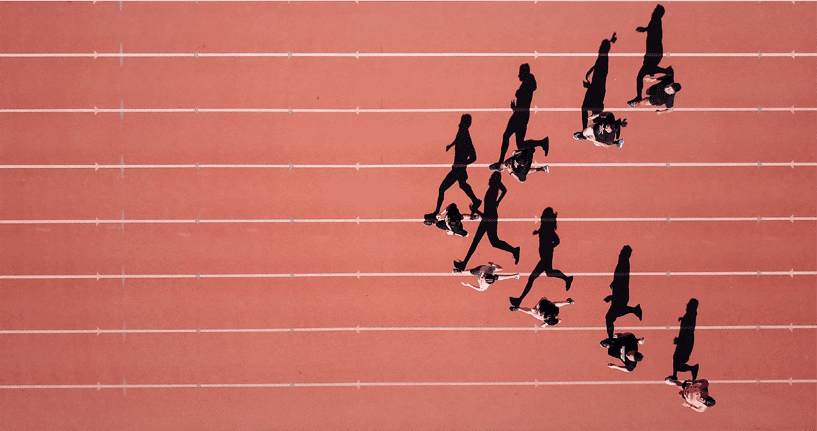Discover the benefits of DNA testing to know your predisposition to iron imbalance and what it means for your workouts.
Table of Contents
What is iron and what is its function?
Iron is one of several minerals that the body needs for proper functioning and development. In our body, iron is involved in the synthesis of hemoglobin, a protein found in red blood cells, which is responsible for transporting oxygen from the lungs throughout the body, as well as myoglobin, a protein that stores oxygen and supplies it to the muscles. It is also necessary for the production of hormones and connective tissue, and contributes to normal energy metabolism and proper functioning of the immune system.
Anemia is the most common nutritional deficit in the world. This condition is characterized by an insufficient number of red blood cells, derived from iron deficiency (among other causes) and affects all age groups, although it is more common in pregnant women, women of childbearing age, children and the chronically ill. [1]
How do I know if I have an iron imbalance?
First of all, it should be said that iron levels for each person vary depending on age and gender, and we should also keep in mind that there is both iron deficiency and iron excess, and both scenarios present different symptoms.
Symptoms of iron deficiency:
- Fatigue
- Lack of energy
- Intestinal disorders
- Lack of memory and concentration
- Difficulty regulating body temperature
Symptoms of excess iron:
- Weight loss
- Fatigue
- Abdominal pain
- Hyperpigmentation
- Amenorrhea (in women)
- High blood sugar levels
Causes of iron deficiency
There are multiple causes of iron deficiency, but we will mention some of the most common ones:
A diet low in iron. Iron is obtained from the food we eat, however, our body is only able to absorb 1mg for every 10 to 20 mg of iron ingested in our diet. [2]
Physical changes. When the body is in a state of growth, there may be difficulty in receiving the amount of iron needed by the body. For this reason, iron deficiency is very common in children and pregnant women.
Blood loss. This can occur if a person donates blood too frequently, after surgery, during menstruation or if there are internal injuries of which one is unaware.
Abnormalities in the digestive tract: Disorders that interfere with intestinal absorption, such as celiac disease and
intestinal absorption, such as celiac disease, can also cause iron deficiency. [3]
Causes of excess iron.
People with excess iron disorders absorb more iron than normal through food or supplements. The body cannot eliminate the extra iron fast enough, so it accumulates and is stored in organ tissue, mainly the liver, heart, and pancreas. [4] There are several causes that can trigger an excess of this mineral, including several genetic variants that increase iron absorption, even when normal amounts are ingested.
The importance of iron in athletes
Iron alone is an essential mineral for anyone, however, in the case of athletes, it is vitally important for maintaining a healthy immune system, brain function, energy and muscle strength.
Iron is lost through sweat, urine, the gastrointestinal (GI) tract and menstruation, but exercise, especially high-intensity and endurance exercise, increases iron losses by up to 70% compared to the sedentary population. [5] Therefore, we can state that athletes need a higher iron intake than the general population.
Iron is necessary for oxygen transport and metabolic energy, and both processes are critical to fuel aerobic exercise. Therefore, iron deficiency can result in endurance athletes may experience a decrease in maximal oxygen volume (VO2 max), i.e., the maximum amount of oxygen the body can use, which directly affects their athletic performance. If iron deficiency is exacerbated, the body may not produce a sufficient number of red blood cells and anemia, i.e., low red blood cell count, may result. [6]
Some of the symptoms that often affect iron-deficient athletes are dizziness, extreme tiredness, poor athletic performance, headache or difficulty regulating breathing, among others.
CrossDNA and sports performance
All CrossDNA wellness and sports tests include the analysis of specific markers related to genetic predisposition to high or low levels of different vitamins and minerals, as well as other dietary and health-related factors, which will give you a better understanding of how to improve your sports performance and overall health.
Bibliografía:
[1] T.H Chan , H. (2020, October 19). Iron. The Nutrition Source. Retrieved September 1, 2022, from JF https://www.hsph.harvard.edu/nutritionsource/iron/#:~:text=Iron%20is%20a%20major%20component,oxygen%2C%20which%20leads%20to%20fatigue.
[2] Johns Hopkins Medicine. (2020, July 20). Iron-deficiency anemia. Johns Hopkins Medicine. Retrieved September 1, 2022, from https://www.hopkinsmedicine.org/health/conditions-and-diseases/irondeficiency-anemia
[3] Johnson, L. E. (2022, August 22). Carencia de Hierro – Trastornos nutricionales. Manual MSD versión para público general. Retrieved September 1, 2022, from https://www.msdmanuals.com/es-es/hogar/trastornos-nutricionales/minerales/carencia-de-hierro
[4] Brazier , Y. (2020). Iron overload disorder: Symptoms, causes, and treatment. Medical News Today. Retrieved September 1, 2022, from https://www.medicalnewstoday.com/articles/166455
[4] Gaudiani, J. (2018, August 29). Iron deficiency in athletes. Gaudiani Clinic. Retrieved September 1, 2022, from https://www.gaudianiclinic.com/gaudiani-clinic-blog/2018/8/29/iron-deficiency-in-athletes#:~:text=Athletes%20may%20experience%20the%20following,exercise%2C%20headaches%2C%20and%20dizziness.
[5] Schrier SL, Auerbach M. Causes and Diagnosis of Iron Deficiency and Iron Deficiency Anemia in Adults. Up To Date. Waltham, MA: Up To Date: http://uptodate.com. Accessed on Sep 1, 2022.





